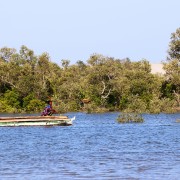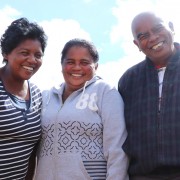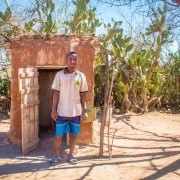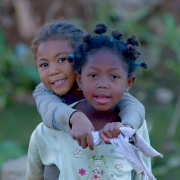Speeches Shim

The outrigger canoe moved swiftly through the large mangrove channel, led by the sure hand of the paddler seated behind us. The morning was still. The only sound came from the sluice of the paddle through the water and the occasional shrieks from birds overhead, alarmed by our intrusion.

Theodore Ravanomanana and his two sisters, Victorine Ravaomalala and Florine Rahantavololona, live in Alasora, a suburb of Antananarivo, Madagascar’s capital city. They share a house that used to belong to their parents. And they also jointly own a small plot of land nearby that has remained unused for a long time, and is covered with unkempt grass and wild vegetation.

Convincing the community of Mandahazo in southwestern Madagascar to give up open air defecation a start using latrines became something of a spiritual struggle. That is because in the village there was a belief latrines were linked to evil spirits that kill the children.

Madagascar’s textile and apparel industry is the largest formal employer outside of agriculture. It has the capacity to create hundreds of thousands of new jobs if the industry can regain U.S. buyer confidence and take advantage of duty-free exports to the U.S. through the African Growth and Opportunity Act (AGOA). The USAID East Africa Trade and Investment Hub helps Madagascar-based apparel companies to improve their efficiency and institutionalize the best practices and standards that American apparel companies require. The end result is formal employment for Malagasy workers and quality product for U.S. businesses.
The United States Agency for International Development (USAID) is pleased to announce that the recently sworn-in Director of USAID in Madagascar, John L. Dunlop, inaugurated the new offices of the USAID Hay Tao and USAID Mikajy projects in Ankadivato and Tsiadana on the morning of Wednesday, September 26, 2018. These projects form the two major components of USAID’s Conservation and Communities Program (CCP) and will operate for five years.


![Cover: Paradise Lost? Lessons from 25 years of environment programs in Madagascar - Click to read publication [PDF, 3MB] Cover: Paradise Lost? Lessons from 25 years of environment programs in Madagascar](https://2017-2020.usaid.gov/sites/default/files/styles/732_width/public/nodeimage/paradise_lost_0.jpg?itok=klue3vb3)
Comment
Make a general inquiry or suggest an improvement.